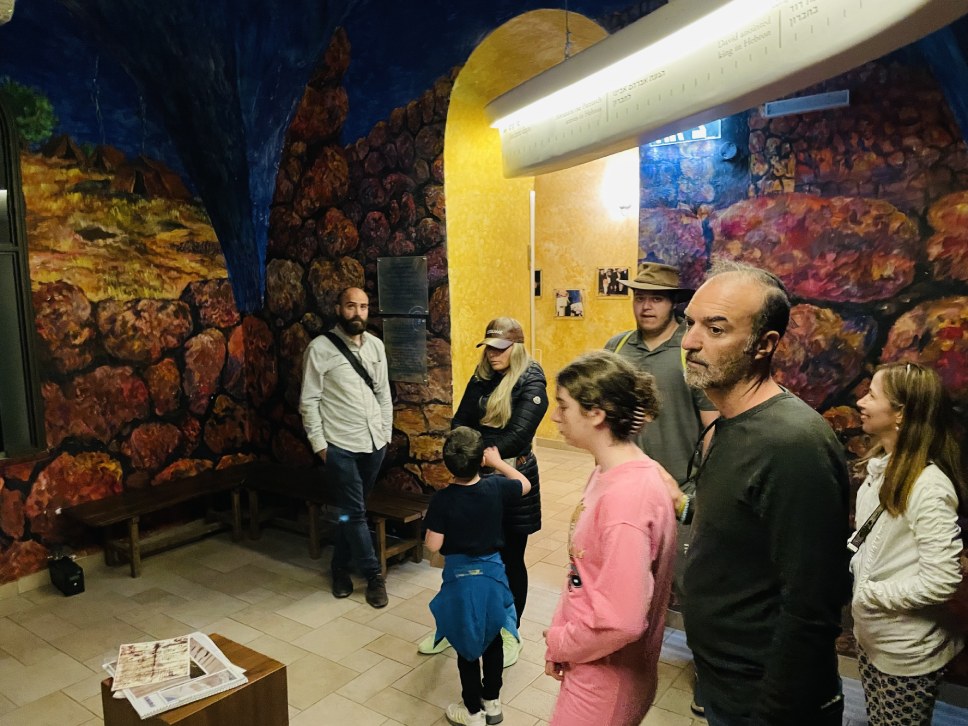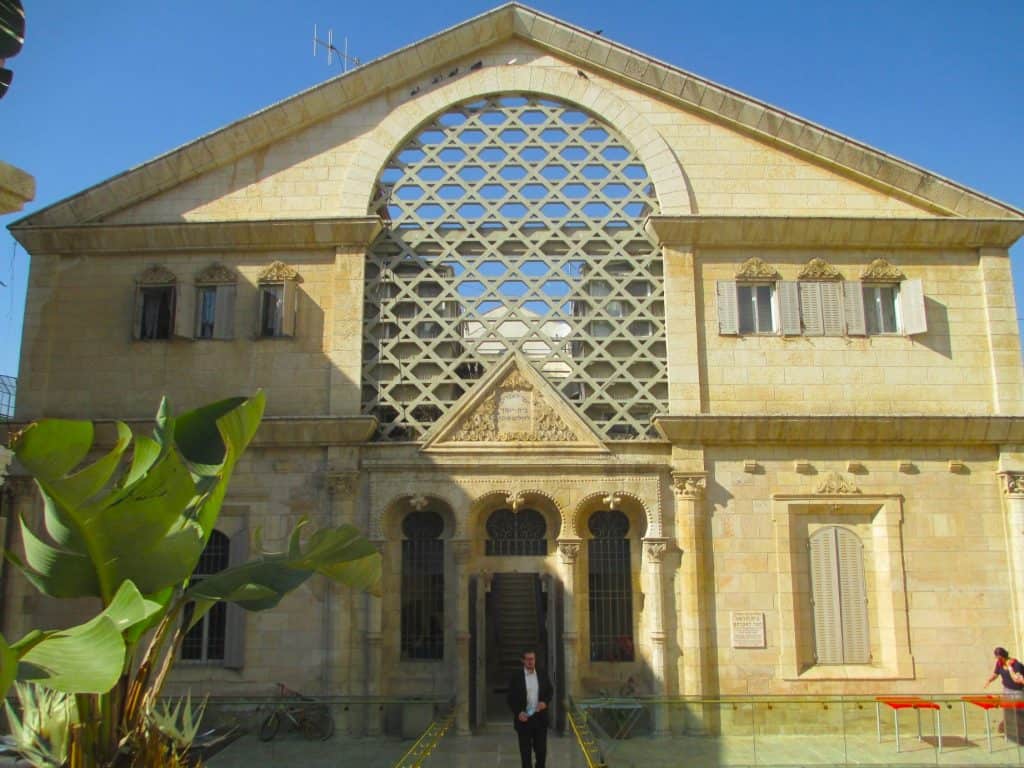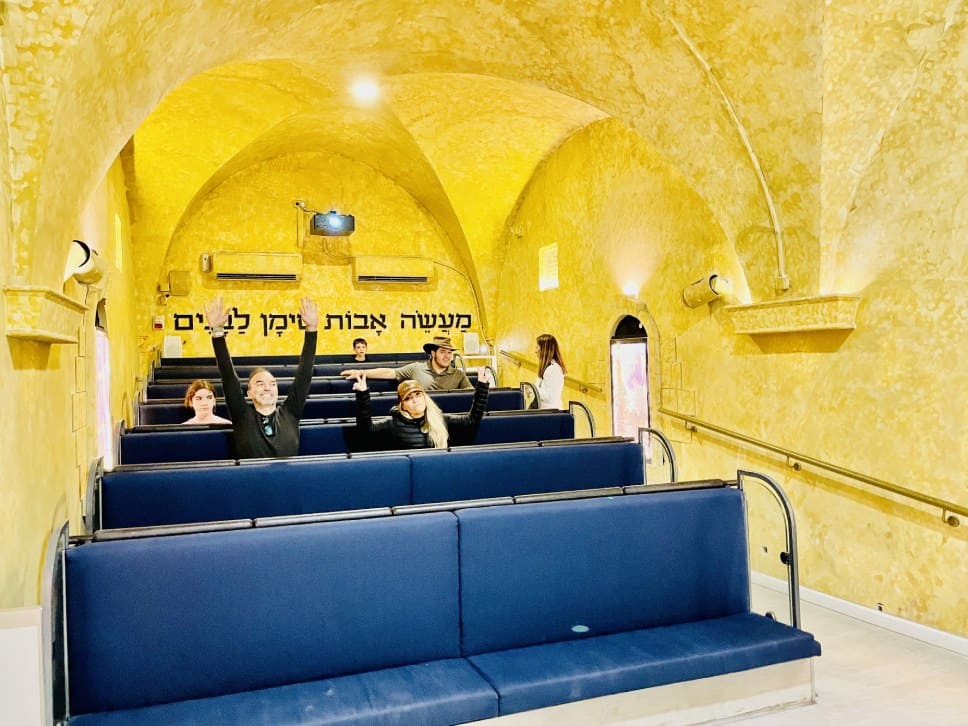The historic Beit Hadassah complex in the Old City of Hebron has a rich history dating back to 1893. Located on the ground floor of the Hadassa Building, the Beit Hadassah Hebron’s Visitors Center is a museum that tells the storied history of the Beit Hadassah complex and the building in which it is housed.

History
Beit Hadassah was established in 1893 by Rabbi Haim Rahamim Yosef Franco and the Jewish community of Hebron, the Hadassa Building was originally a medical clinic called Chesed L’Avraham (Kindness of Abraham). It was utilized as an infirmary and aid center for the needy.

In the early 1900s, the Hadassah Organization opened a clinic in the building, providing free medical care for Jews and Arabs. The pharmacist Ben-Zion Gershon, the Rabbis of the Jewish community, and Rabbis Hanoch Hasson and Yosef Castel and their families lived in the house adjoining the clinic. The building was renamed the Hadassa Building.
During the 1929 riots, the Arabs attacked these homes, torturing and murdering all their inhabitants, and the Hadassah Clinic was destroyed. The Jews that were left alive in the complex were evacuated by the British authorities and returned to the complex in 1931. When the Arabs began rioting in 1936, the Jews were evacuated by the British once again. The Arabs seized Jewish homes, and an Arab school was opened at Beit Hadassah.
Taking Beit Hadassah Back
When Hebron was liberated in 1967, Jews began striving to return to these houses. In 1971, Kiryat Arba, an Israeli Military Compound outside Hebron, was established. Families lived in temporary dwellings for more than two years until the first buildings at Beit Hadassah were constructed and completed.
In the early spring of 1979, immediately after Passover, a group of ten women and 40 children proceeded secretly from Kiryat Arba to Hebron in the middle of the night. Arriving behind Beit Hadassah in the heart of the city, the women and children climbed into the vacant structure through a small window on the rear side of the building.
When the Israeli government found out about the occupation, it ordered the army to surround Beit Hadassah, effectively placing the building under siege. After standing strong for many months, the government finally relented to re-establishing a permanent Jewish civilian presence in Hebron.
In late spring of 1980, after the women had been in Beit Hadassah for over a year, Arab terrorists attacked a group of Yeshiva students that used to go to the Beit Hadassah to pray, sing, and dance. As a result of this terrorist attack, the Israeli Government decided to allow the women to reunite with their husbands and children in Beit Hadassah.
Finally, the old Beit Hadassah building was repaired and extended, and today, Beit Hadassah and its neighboring buildings, Beit Hasson, Beit Castel, and Beit Shneerson, are home to 25 families.
Visiting the Beit Hadassa Museum
So the Museum has five exhibition rooms, each designed and painted by Hebron artist Shmuel Musnick. A timeline runs through the whole museum detailing the history of Hebron throughout the ages, from the Biblical period, the two Temple periods, through the Middle Ages, the 1929 massacre, and finally, the renewal of the community today. Each room shows a short film in Hebrew and English appropriate for all ages. The Visitor’s Center also has a café and an event hall.

Beit Hadassah Opening Hours:
TEL: 072-2213660
Sunday-Thursday: 10:00-16:00
Friday: 09:00-13: 00
Admission: NIS 30 for an adult / NIS 25 for a child/retiree
Special price for groups
To arrange a visit, here is a link to book a tour

